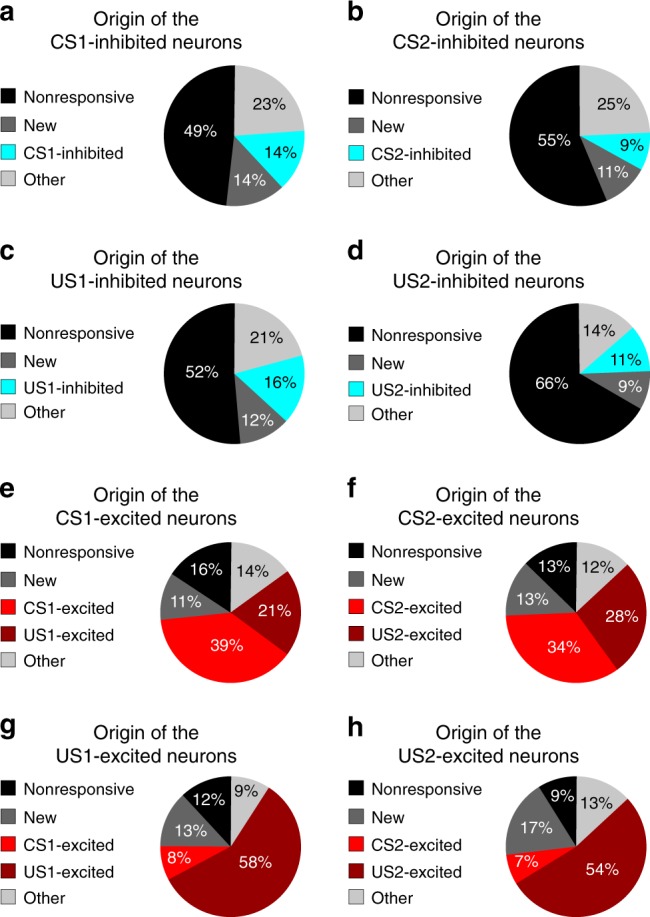Fig. 4.

The origin of post-learning CS-responsive and US-responsive neurons. a–d For the BLA neurons showing inhibitory responses to CS1 (a), CS2 (b), US1 (c), or US2 (d) at the post-learning stage, the majority of them did not respond at the pre-learning stage to any of these stimuli (“nonresponsive”); some of them were not identified (“new”), were originally inhibited by CS1 (a), CS2 (b), US1 (c), or US2 (d) or were responsive to other stimuli (“other”) at the pre-learning stage. e, f For the BLA neurons showing excitatory responses to CS1 (e) or CS2 (f) at the post-learning stage, some of them did not respond at the pre-learning stage to any stimuli (“nonresponsive”); some of them were not identified (“new”), were originally excited by CS1 (“CS1-excited”) or US1 (“US1-excited”) (e) or by CS2 (“CS2-excited”) or US2 (“US2-excited”) (f), or were responsive to other stimuli (“other”) at the pre-learning stage. (g, h) For the BLA neurons showing excitatory responses to US1 (g) or US2 (h) at the post-learning stage, the majority of them were originally excited by US1 (“US1-excited”) (g) or US2 (“US2-excited”) (h) at the pre-learning stage; some of them did not respond to any stimuli (“nonresponsive”), were not identified (“new”), were originally excited by CS1 (“CS1-excited”) (g) or CS2 (“CS2-excited”) (h), or were responsive to other stimuli (“other”) at the pre-learning stage
